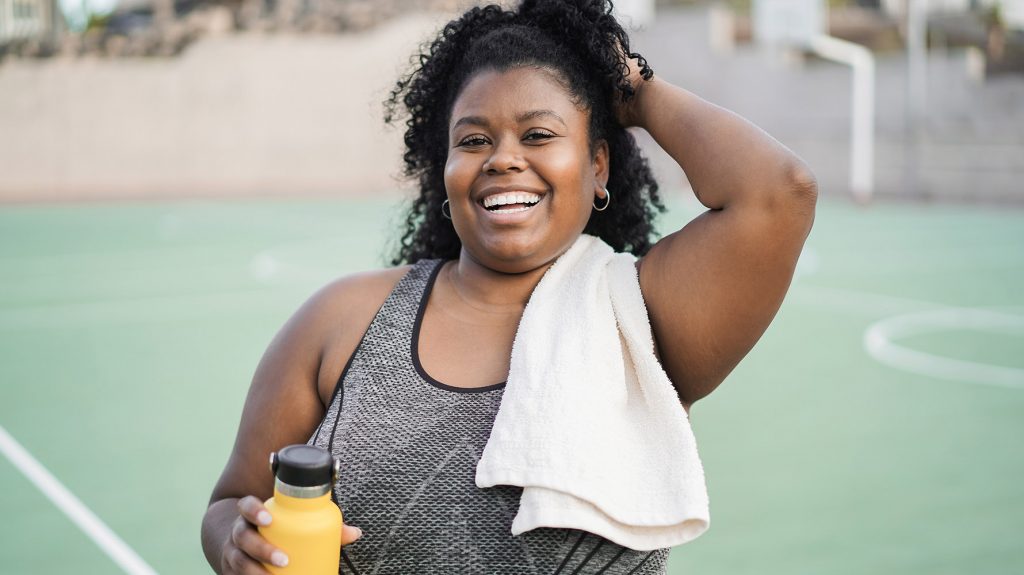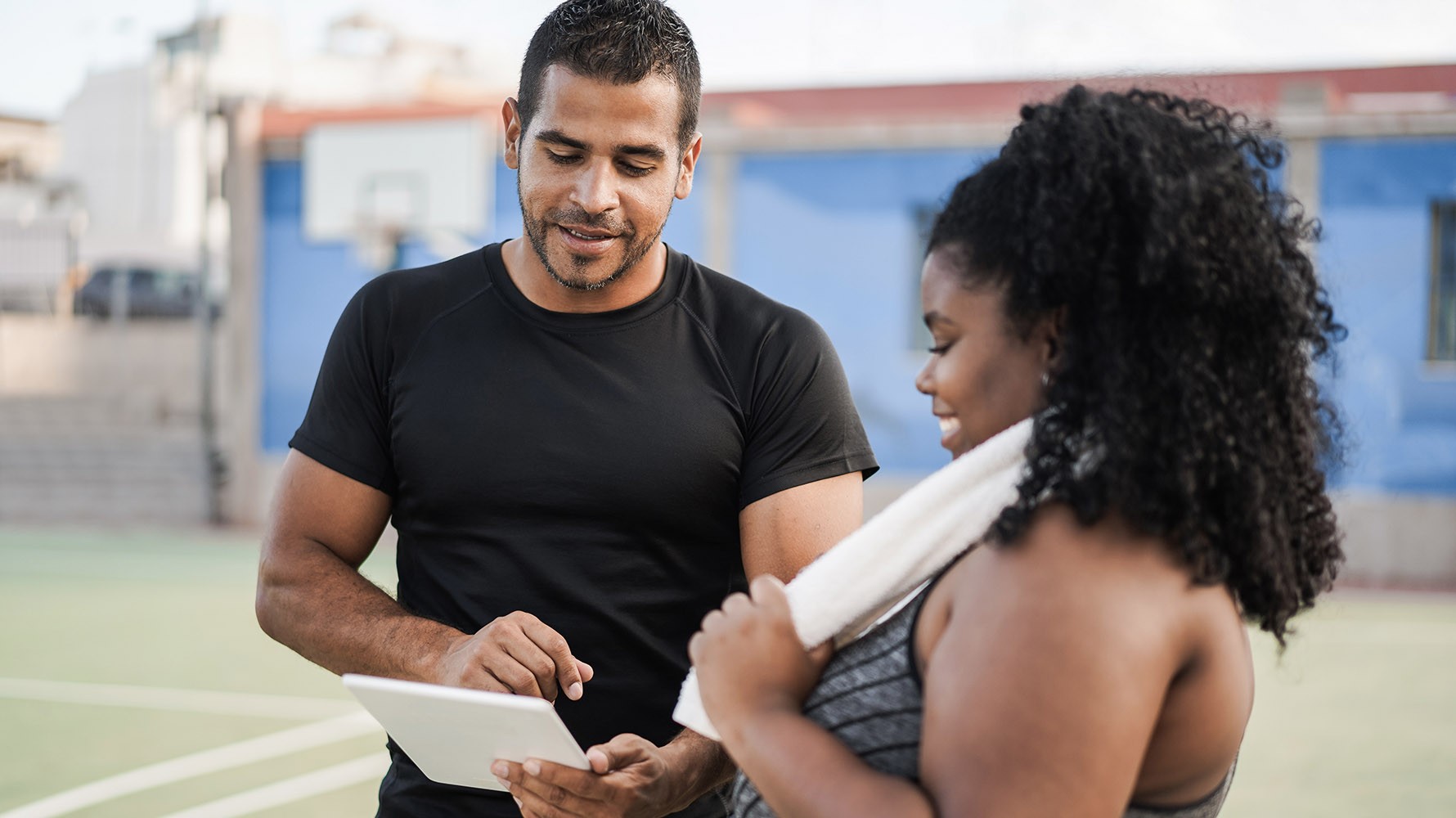People who are overweight are not recommended to do many things like jumping, high-intensity training, etc. But this does not mean that you need to stay away from the gym. In this article, we will discuss the most important things about the workout for those who are overweight and we will highlight the best exercises.
Features of Workout for Overweight Beginners
Start small. If you haven’t done much exercise before, spend the first few weeks simply increasing the amount of physical activity that you do. Brisk walking will be enough for this. Then add cardiovascular training afterwards. First, people who are overweight need to prepare their respiratory and cardiac systems. I would recommend starting not even with strength exercises, but only with small cardioexercises, using exercise machines and a swimming pool to strengthen these systems. More oxygen will flow into the blood and it will become easier to exercise once you start to gain some experience.
Eliminate Shock Loads, such as Jumping or Running
After 3-4 weeks of regular cardio, you can introduce light strength exercises. Don’t grab the weights right away. Instead perform simplified versions of classic movements. So instead of regular squats, start with bench squats which are a less intensive workout towards the body. In this case, the range of motion will be short, the hip joint and knees will work very carefully. Gradually, your mobility will improve and these muscles will get used to the stress they are put under. Only then you can move on to deeper squats.
Opt for shorter and less intensive workouts, while maintaining your motivation as this is important at first. But if you train too much and too often, your motivation will inevitably decrease due to the amount of added stress that is being put on your body. Therefore, I recommend exercising for 20-30 minutes every other day or two. This will give your body time to recover from these exercises that your body will not be used to.
Monitor your well-being during exercise. If you feel discomfort and fatigue, it’s time to end your workout, as you do not want to cause any unnecessary damage to your body of cardiac system.

Strength Training for Overweight Beginners
Overweight people should give preference to exercises that works out the muscles of the arms, back, abs and legs. If you strengthen these muscles, then all everyday movements will be easier to do and you will find that your everyday life along with light cardio sessions will become much easier.
How to Create a Training Program
- Start your workout with a warm-up. This will keep you safe from injury.
- Exercise at a comfortable pace, follow the exercise techniques carefully.
- Experiment with the number of reps and sets. Start with 5-15 repetitions. If this seems easy to you, increase the number of sets. If this seems too hard for you, then you can start with lower reps.
- Watch your breathing: always exhale on exertion.
To complete these set, you will need a stable bench, TRX straps, and a mat.
5 Best Exercises for Obese Beginners
1. Bench Dips
Sit on a bench, rest your palms on the seat, straighten your arms. Place your heels on the floor with your legs extended forward. Move your body forward and lower your pelvis down, hanging it from the bench. Bending your elbows at a 90-degree angle, lower your body even lower, slide your back along the edge of the bench. Then gently straighten your arms and return to the starting position. Then you can repeat.
2. Bench Push-Ups
Stand facing the bench, rest your palms on the bench, place the toes of your feet on the floor. Work the muscles of the abs, back, legs. Bending your elbows, lower your chest down and touch the bench. Then smoothly return to the starting position, straightening your elbows. Then you can repeat this process.
3. Bench Squats
Stand with your back to the bench at a distance of 30 cm from it. Place your feet shoulder-width apart. Bending your knees, take your pelvis back and lower your buttocks to the bench. Work your abdominal muscles, lean your body forward slightly. Return to the starting position and then repeat.
4. TRX Pull-Ups
Attach the TRX straps to a secured spot so that the handles reach your chest level. Grab them with both palms, rest your heels on the floor, lean your body back, straighten your arms. Using your abdominal and arm muscles, bend your elbows, press them against your body, and pull your body forward. Keep your spine straight and your ribcage forward. Then gently return to the starting position and repeat.
5. Abdominal Crunch
Lie on your back. Bend your knees, put your feet on the floor. Put your arms behind your head. Contract your abs and inhale. Gently lift your body and touch the floor with your hands at foot level. Return to the starting position and repeat.
Do not chase speed or try and break any records. Exercise at a pace that is comfortable for you. Gradually, the body adapts and you can increase the load.
Conclusion
When you are overweight, the thought of exercise seems like a world away. You might feel like climbing the stairs to get to the bathroom is already too intense, but just remember everyone who has gone from being overweight to loosing that weight and becoming a good comfortable size had to start somewhere. First exercising while being obese or overweight is never going to be easy and some people will want to give up on the first day. But just remember exercise is not supposed to be a walk in the park or fun, it is done so that we can stay healthy and our systems within our body can function properly. So when you start your first exercise, it will be hard! You will feel tired and sore, but you do not need to train until you pass out. Just a little bit of regular exercise using the advises that we have given from the above information can really make the world of difference. Remember, routine is key for seeing results!


